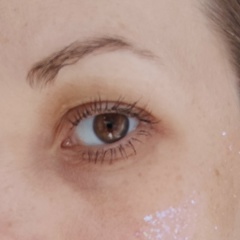Побывал сегодня в склепе Алабиных в Иверском монастыре с другими членами самарского отделения ВООПИиКа.
В сентябре на него наткнулись строители, укрепляющие фундамент одной из исторических построек монастыря. В октябре раскопки начали археологи. До этого склеп находился под землёй. А ещё раньше в деревянном приделе к церкви, разобранном в советское время.
Изначально в склепе было похоронено несколько человек. Но удалось найти только цинковый гроб и разрозненные кости молодой девушки. Скорее всего, это дочь городского главы Елена Петровна, умершая в Ницце, тело которой в течение нескольких месяцев везли из Франции и доставили в Самару пароходом. С неё в 1874 году, вероятно, и начались погребения в склепе (гроб располагался у дальней от входа стенки). Видимо, остальных вынесли при разграблении в раннее советское время вместе с гробами (цинковый гроб не потащили, потому что он был значительно тяжелее). Возможно, в склепе находилась и могила зятя Петра Алабина известного самарского архитектора Александра Щербачёва.
На момент прихода археологов склеп был завален мусором изнутри по самую крышу. Это стандартная история для Иверского некрополя. Некоторые склепы, исследованные археологами в 2006-2008 годах, имели следы использования в советское время в качестве погребов жителями Рабочего городка (были оборудованы полочки для солений). А одна из погребальных камер использовалась даже в качестве выгребной ямы уличного туалета прилегающего дома.
По нашим временам кажется совершенно удивительной тяга к грабительству могил и вторичному использованию их уже через несколько десятилетий после похорон. И это, конечно, иллюстрация духа той эпохи.
Нужно сказать, что доставалось погребениям не только "классово чуждых" дворян и купцов. Можно, к примеру, вспомнить поиски могилы красного командира Щорса, стёртой с лица земли вместе со Всесвятским кладбищем. Как мы узнали прошлым летом, из его могильного камня был сделан бордюр в центре Самары на улице Фрунзе.
В сентябре на него наткнулись строители, укрепляющие фундамент одной из исторических построек монастыря. В октябре раскопки начали археологи. До этого склеп находился под землёй. А ещё раньше в деревянном приделе к церкви, разобранном в советское время.
Изначально в склепе было похоронено несколько человек. Но удалось найти только цинковый гроб и разрозненные кости молодой девушки. Скорее всего, это дочь городского главы Елена Петровна, умершая в Ницце, тело которой в течение нескольких месяцев везли из Франции и доставили в Самару пароходом. С неё в 1874 году, вероятно, и начались погребения в склепе (гроб располагался у дальней от входа стенки). Видимо, остальных вынесли при разграблении в раннее советское время вместе с гробами (цинковый гроб не потащили, потому что он был значительно тяжелее). Возможно, в склепе находилась и могила зятя Петра Алабина известного самарского архитектора Александра Щербачёва.
На момент прихода археологов склеп был завален мусором изнутри по самую крышу. Это стандартная история для Иверского некрополя. Некоторые склепы, исследованные археологами в 2006-2008 годах, имели следы использования в советское время в качестве погребов жителями Рабочего городка (были оборудованы полочки для солений). А одна из погребальных камер использовалась даже в качестве выгребной ямы уличного туалета прилегающего дома.
По нашим временам кажется совершенно удивительной тяга к грабительству могил и вторичному использованию их уже через несколько десятилетий после похорон. И это, конечно, иллюстрация духа той эпохи.
Нужно сказать, что доставалось погребениям не только "классово чуждых" дворян и купцов. Можно, к примеру, вспомнить поиски могилы красного командира Щорса, стёртой с лица земли вместе со Всесвятским кладбищем. Как мы узнали прошлым летом, из его могильного камня был сделан бордюр в центре Самары на улице Фрунзе.
Today I visited the Alabins crypt in the Iversky monastery with other members of the Samara branch of VOOPIIK.
In September, builders came across it, strengthening the foundation of one of the historical buildings of the monastery. Archaeologists began excavations in October. Before that, the crypt was underground. And even earlier in the wooden chapel to the church, dismantled during the Soviet era.
Initially, several people were buried in the crypt. But only a zinc coffin and the scattered bones of a young girl were found. Most likely, this is the daughter of the mayor, Elena Petrovna, who died in Nice, whose body was transported from France for several months and taken to Samara by steamer. In 1874, burials in the crypt probably began with her (the coffin was located at the wall farthest from the entrance). Apparently, the rest were carried out during the plundering in the early Soviet era along with the coffins (the zinc coffin was not dragged, because it was much heavier). It is possible that the grave of Peter Alabin's son-in-law, the famous Samara architect Alexander Shcherbachev, was also in the crypt.
At the time of the arrival of the archaeologists, the crypt was littered with debris from the inside to the very roof. This is the standard story for the Iberian Necropolis. Some crypts, investigated by archaeologists in 2006-2008, had traces of use in Soviet times as cellars by the inhabitants of Rabochy Gorodok (shelves for pickles were equipped). And one of the burial chambers was even used as a cesspool for the outdoor toilet of the adjacent house.
In our times, it seems quite surprising the craving for robbing graves and reusing them within a few decades after the funeral. And this, of course, is an illustration of the spirit of that era.
It must be said that it was not only "class alien" nobles and merchants who got to the burials. You can, for example, recall the search for the grave of the red commander Shchors, wiped off the face of the earth along with the Vsesvyatsky cemetery. As we learned last summer, a curb was made from his gravestone in the center of Samara on Frunze Street.
In September, builders came across it, strengthening the foundation of one of the historical buildings of the monastery. Archaeologists began excavations in October. Before that, the crypt was underground. And even earlier in the wooden chapel to the church, dismantled during the Soviet era.
Initially, several people were buried in the crypt. But only a zinc coffin and the scattered bones of a young girl were found. Most likely, this is the daughter of the mayor, Elena Petrovna, who died in Nice, whose body was transported from France for several months and taken to Samara by steamer. In 1874, burials in the crypt probably began with her (the coffin was located at the wall farthest from the entrance). Apparently, the rest were carried out during the plundering in the early Soviet era along with the coffins (the zinc coffin was not dragged, because it was much heavier). It is possible that the grave of Peter Alabin's son-in-law, the famous Samara architect Alexander Shcherbachev, was also in the crypt.
At the time of the arrival of the archaeologists, the crypt was littered with debris from the inside to the very roof. This is the standard story for the Iberian Necropolis. Some crypts, investigated by archaeologists in 2006-2008, had traces of use in Soviet times as cellars by the inhabitants of Rabochy Gorodok (shelves for pickles were equipped). And one of the burial chambers was even used as a cesspool for the outdoor toilet of the adjacent house.
In our times, it seems quite surprising the craving for robbing graves and reusing them within a few decades after the funeral. And this, of course, is an illustration of the spirit of that era.
It must be said that it was not only "class alien" nobles and merchants who got to the burials. You can, for example, recall the search for the grave of the red commander Shchors, wiped off the face of the earth along with the Vsesvyatsky cemetery. As we learned last summer, a curb was made from his gravestone in the center of Samara on Frunze Street.

У записи 71 лайков,
5 репостов,
1721 просмотров.
5 репостов,
1721 просмотров.
Эту запись оставил(а) на своей стене Андрей Кочетков






































































